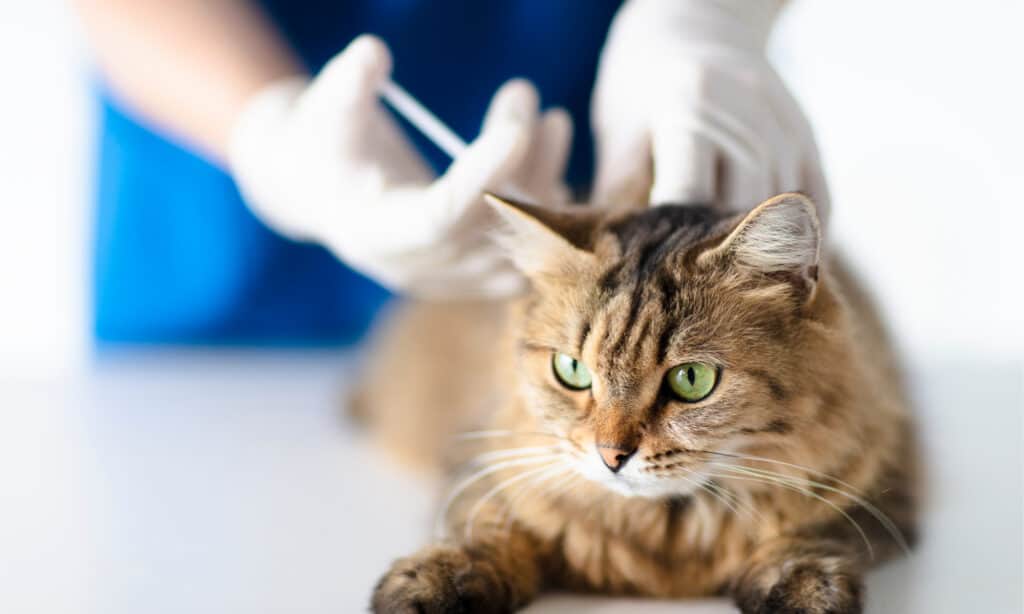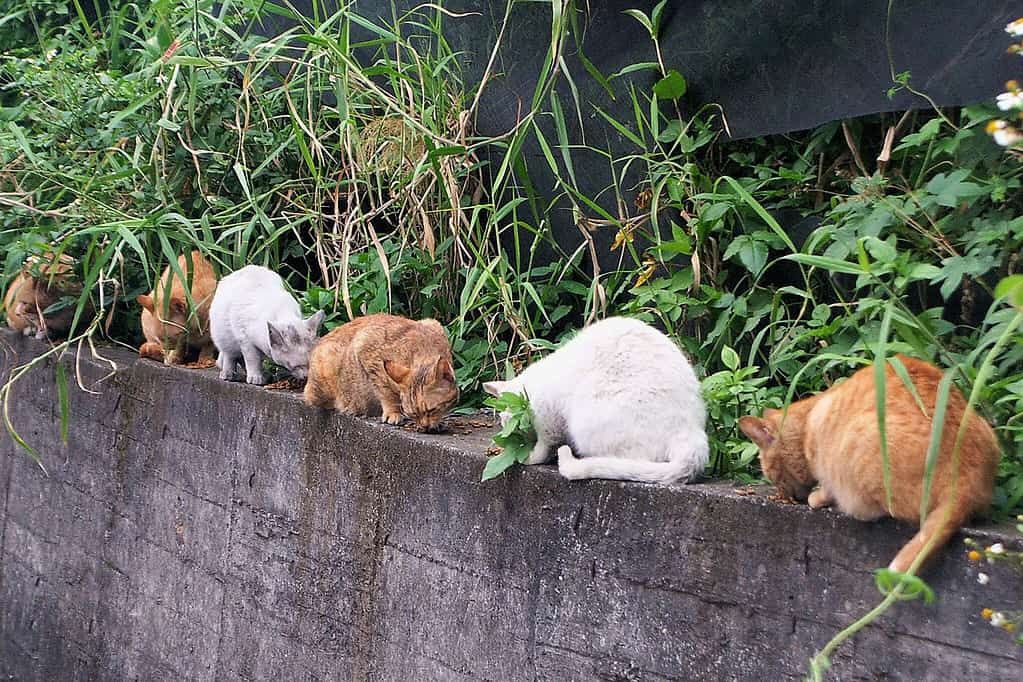An estimated 480 million cats roam around the world as stray cats without a permanent home. Many stray cats are considered feral. A feral cat do not receive much human socialization, typically from lack of human contact. For many years, the predominant method of controlling stray cat populations, especially in big cities, was to euthanize them. However, a growing movement, called Trap Neuter Return has led the way towards a more humane way of preventing stray and feral cat populations from growing. Learn more about TNR and how it helps cats around the world.
What is Trap Neuter Return?

At the same time that feral cats receive sterilization, they receive a full health check with vaccinations, too.
©Tom Wang/Shutterstock.com
Many different cat rescues and humane societies in the United States practice Trap Neuter Return, or TNR, a comprehensive feral cat control method. Countries like Australia and Italy have also introduced TNR programs into some communities. The goal of TNR is to humanely capture feral cats, stop them from breeding, and return them to their colony to live out the rest of their life. Numerous peer-reviewed papers share the effectiveness of TNR in reducing cat populations. Evidence from studies of TNR programs show how they limit the amount of euthanasia cases in shelters around the world.
How Does This Method Work?

During the Trap Neuter Return process, people catch stray or feral cats in safe traps and keep them in humane conditions.
©Giordano66/Shutterstock.com
Most Trap Neuter Return programs have the same few steps, although variations occur to account for different locations, laws, and resources.
- People trap cats using humane traps.
- Cats transported to a local TNR program site, sometimes part of a local humane society.
- Cats are sterilized and vaccinated. Many programs put a small notch on the ear to let others know the cat’s sterile status.
- Cats with enough socialization might be placed into adoption programs. Most programs return completely feral animals to their original location.
What Happens After Return?
Trap Neuter Return programs vary from state-to-state and country-to-country. Sterilization serves as the main component of most programs, wherein they spay female cats and neuter male cats to prevent future breeding. However, many TNR programs also work to vaccinate, adopt, and monitor cat populations.
Most people define feral cats by their lack of human socialization. But in many instances, dedicated individuals raise kittens born into a feral cat colony and socialize them for adoption. Many stray cats trapped in TNR programs might end up in adoption programs if they seem agreeable to human contact.
For the cats returned to their urban colonies, many programs try to monitor large colonies in partnership with human societies, cat rescues, and volunteers.
Criticism of TNR
Although TNR has become an accepted method for controlling feral cat populations around the world, there is still criticism. One paper published by Crawford et al. poses questions about the quality of life for stray cats, where they would live, and the stress involved with TNR programs. Various rebuttals refute the claims made by Crawford et al., especially regarding their understanding of TNR and its effectiveness. Other critics cite studies that do not show a reduction in feral cat populations over time. For example, more cats might arrive at the colonies due to abandonment. Critics point out that TNR programs remain ineffectual if people with domestic cats neglect to prevent the birth of unwanted kittens.
Criticism about the lives of cats returned back to colonies questions TNR as an ethical solution. Although TNR keeps more cats alive, they often live shorter lives with an increased risk of disease and injury. Some people do not believe in the viability of maintaining healthy, thriving cat colonies in urban areas.
Other criticism comes from a different direction, including those who warn about feral cats decimating local wildlife populations. Feral cats mostly catch their food, which means large colonies of cats can easily disturb native wildlife in their quest for resources.
Benefits of TNR

Proponents of TNR programs point out that colonies receive much monitoring from organizations and volunteers, which helps them address problems like disease.
The main benefit of TNR programs is to reduce the number of feral cats living in an area. By spaying and neutering cats, groups can prevent more kittens from being born. Cats can begin having kittens as young as six months and have as many as three litters in a year. Although mother cats and their kittens experience high mortality rates in the wild, plenty of kitten potential for unspayed cats remains. Feral cat colonies left unmanaged can become out of control quickly, especially given enough space and resources.
TNR programs help reduce cat behavior that can be problematic to humans, including fighting, yowling, and spraying in male cats. Plus, during the sterilization process, most cats receive routine vaccinations to prevent the spread of disease within the colony after their return. Of course, not every TNR program is perfect, and different circumstances might alter the overall benefits to cats and people.
Alternatives to TNR
If you are dealing with a few unwanted stray or feral cats near you home, you can try to find a natural, safe solution, including modifying the surrounding area. Or you can contact your local TNR program for guidance.
Most animal rescues and humane societies iterate four main ways to deal with large feral cat populations.
- Trap and Kill: cats are caught and euthanized to reduce the colony
- Trap and Remove: cats are caught and relocated
- Trap and Return: cats are caught, fixed, and returned to the same location
- Do Nothing: nobody does anything to control the population, except withholding food or resources
Trap Neuter Return programs remain highly popular because they accomplish two things that none of the other methods do. TNR works to reduce feral cat populations and treats feral cats humanely. Until most domestic cat owners choose to sterilize their pets, there will be a stray cat problem in many places worldwide. And Trap Neuter Return programs will likely continue to operate in response until other options become available.
The photo featured at the top of this post is © Akintevs/Shutterstock.com
Thank you for reading! Have some feedback for us? Contact the AZ Animals editorial team.







